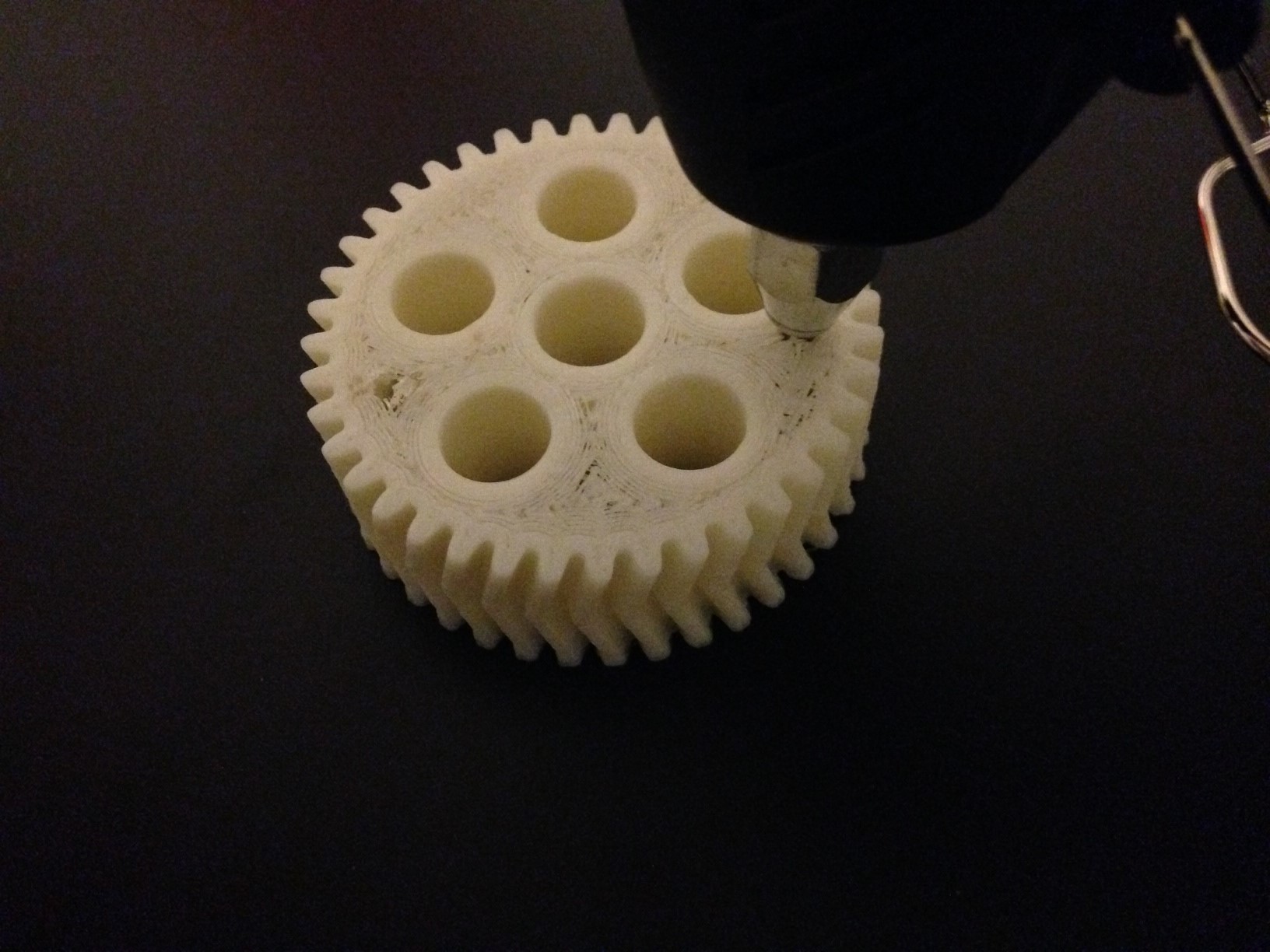
A persistent issue with 3D printed parts, particularly those printed on lesser machines, is strength and durability. They aren’t quite as strong as injection molded parts. Now there could be a way to easily rectify this problem.
The traditional way to make stronger 3D printed parts, at least on plastic extrusion machines, is two-fold:
- Pick a strong material, such as ABS over PLA
- Print with higher internal density, even 100% solid
Either of those work, but the printing solid objects quickly raises the cost. It also delays your print significantly. Instead of a two hour 3D print operation, you might be looking at six hours or more.
But now there’s another approach. The folks at Lantern Robotics have been injecting hot melt adhesive (basically a glue gun) into sparsely filled 3D prints. According to their post on Reddit:
- HMA is still a thermoplastic and much cheaper per pound then ABS.
- Much faster than printing with infill.
- It melts lower than ABS so the temperature of the glue and nozzle don’t affect the print.
- It adds an amazing amount of strength directly comparable to a solid printed model.
- Makes the object more ‘shatter-proof’, if the print cracks it is held together by the firm,yet rubbery HMA inside.
Their process is pretty straightforward: 3D print your part with a relatively sparse infill and ensure you have a few shells on the outer surface. Drill two holes separately widely on the object. Inject hot melt adhesive into one of the holes (the other is to permit interior air to escape). Continue until adhesive is visible in the second hole.
The resulting parts are strong, inexpensive and quickly made. Can’t ask for more than that!

